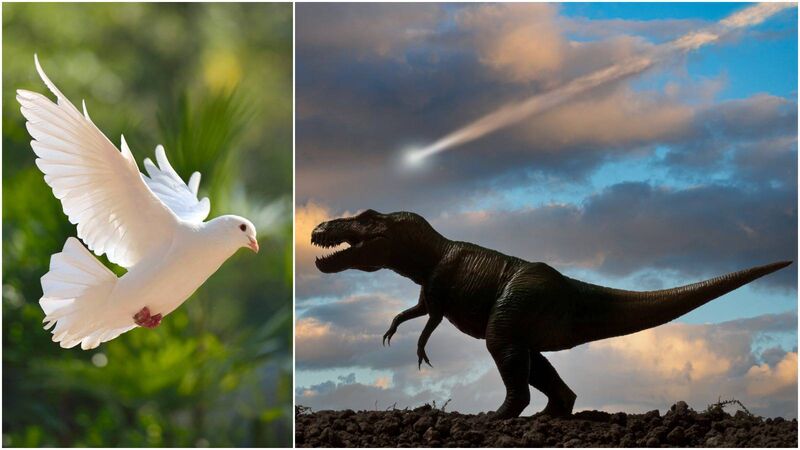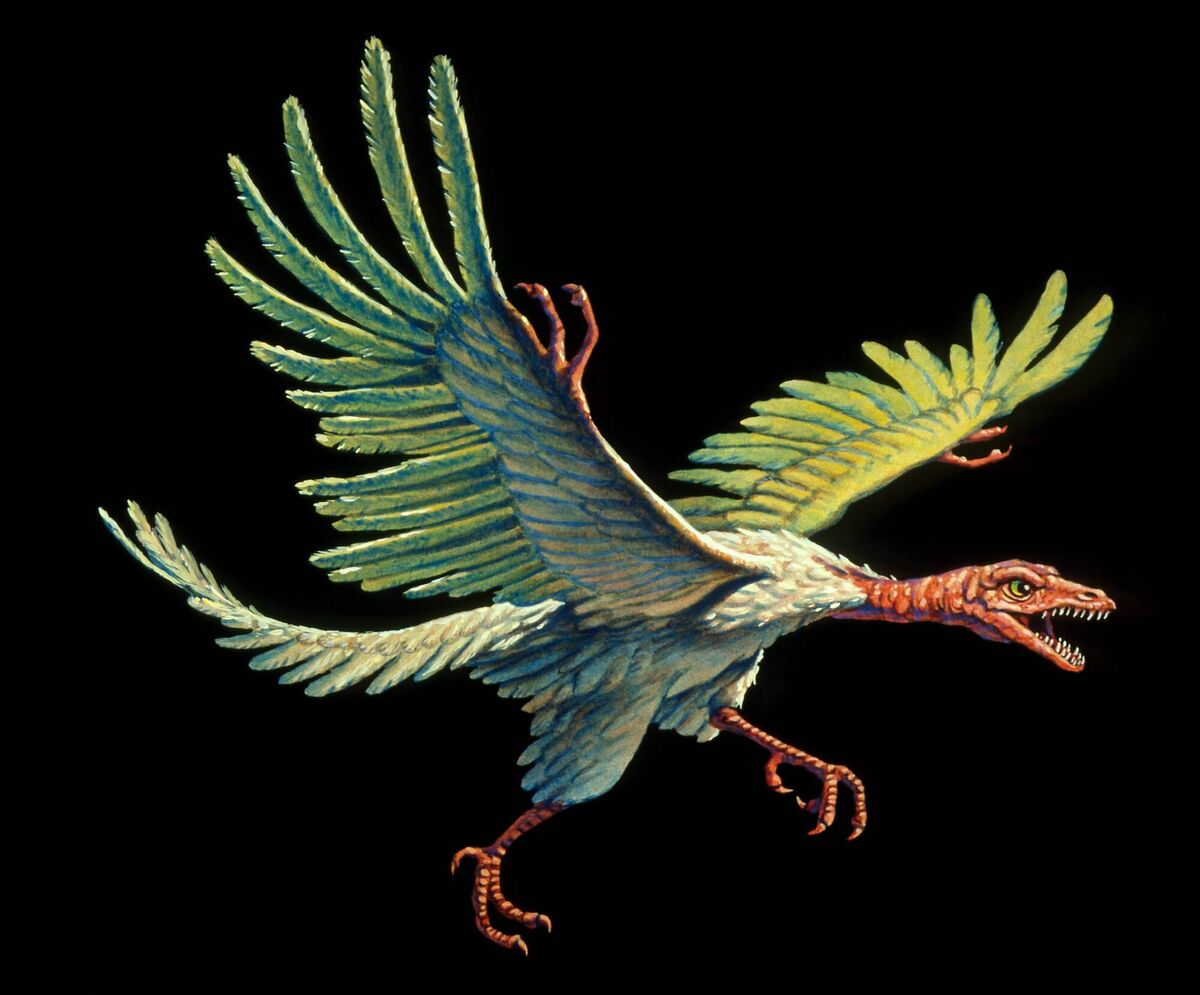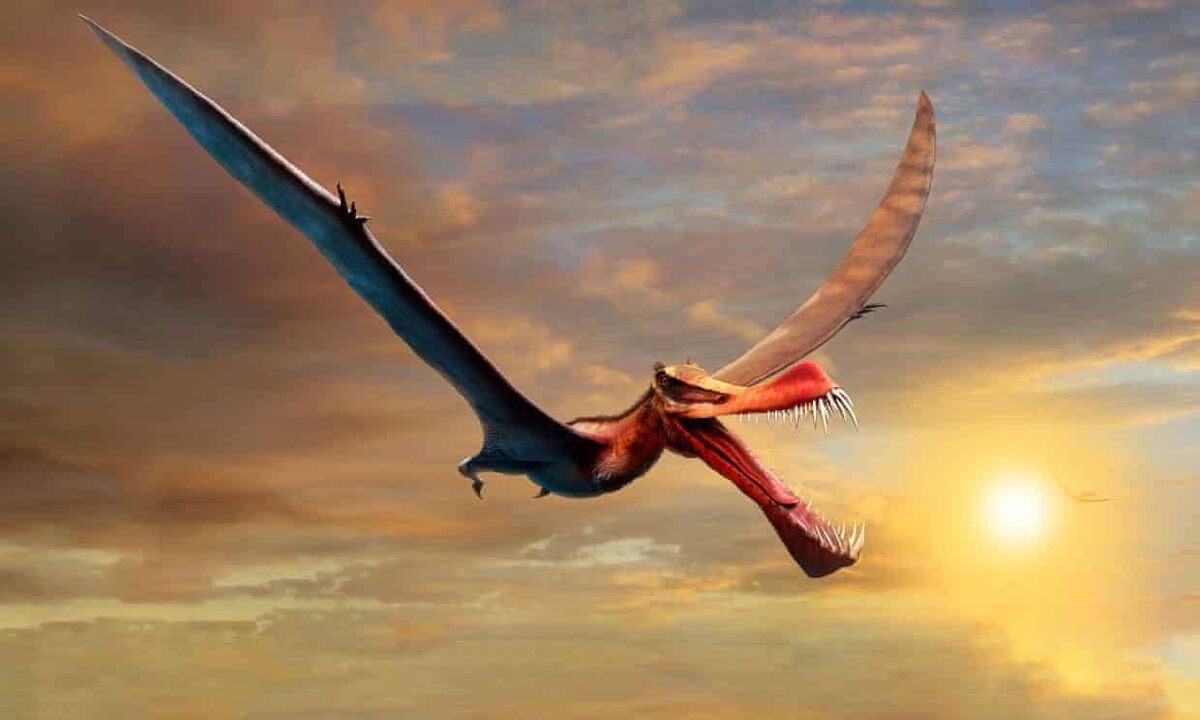Richard Collins: Are dinosaurs still around today — masquerading as birds?

Could modern doves — symbols of peace and tranquillity — be related, even distantly, to the Tyrannosaurus Rex?


Try from €1.50 / week
SUBSCRIBEThomas Henry Huxley, aka Darwin’s bulldog, described birds as ‘glorified reptiles’.
The famous ‘missing link’ fossil had been found in Bavaria: Archaeopteryx had the teeth and long bony tail of a reptile, but it also had feathered wings. Here was the first known bird.

But to which group of reptiles was Archaeopteryx most closely related? The creature’s front limbs had become wings. Like Tyranosaurus rex, one of Richard Owen’s ‘terrible lizards’, it walked on two legs. Could modern doves, symbols of peace and tranquillity, be related, even distantly, to such a monster?
‘A bird is a feathered reptile‘, declared the zoologists — a beautifully unambiguous definition.
Then, in the year 2000, farmers in North-east China put the cat among the palaeontological pigeons. They unearthed a fossil which became known as the ‘fuzzy raptor’. This was clearly a dinosaur with feathers, but one adapted for life on the ground without serious flying ambitions. You could hardly describe such a creature as a ‘bird’.
But here was evidence, not just of an ancestral link between birds and reptiles, but between birds and dinosaurs. It raised an intriguing possibility; had all of the giant reptiles gone to the wall? Could they be still around today, masquerading as birds?
We think of our feathered friends as the supreme flyers, their aerial feats matched only by those of insects and bats. But birds were not the only flyers long ago; other reptiles had also taken to the air. Among them were the pterosaurs.

A wandering albatross has a maximum wingspan of 3.5m, but some pterosaur wingspans reached 9m. The first vertebrates to develop powered flight, pterosaurs used all four limbs in the air; a membrane connected the fore and hind ‘legs’, as in bats. Their bodies, it was thought, had fluffy downy coats but no true feathers. Then, in 2018, researchers showed that pterosaurs had, in fact, several types of feather.
Scientists at UCC and the Belgian Institute of Natural Sciences, writing in the journal Nature, dispel any lingering doubts as to the existence of pterosaur feathers. The crest of a fossil specimen they studied had ‘wiry hair-like feathers’ and ‘fluffy branched feathers’. Not only that; granules of melanin pigment were present. These show that ‘colouration was a critical feature of even the earliest feathers’, says key researcher Maria McNamara.
Ancient birds opted for a different approach to flying; they used only two limbs as wings. A great natural experiment was underway; which would triumph, two-limbed or four-limbed flying?
You might conclude that the two-limbed approach of birds proved superior, but this survival-of-the-fittest contest did not take place on a level playing field; the demise of the pterosaurs was due to a billions-to-one freak accident. Apart from turtles and crocodiles, no creature weighing more than 25kg survived the impact of an asteroid 66 million years ago and the global doomsday shroud which enveloped the Earth after it. Most birds were small; they survived. Pterosaurs didn’t.
Bats, four-limbed flyers, account for a quarter of all mammal species.
Had it not been for the asteroid, would reptilian bat-men and bat-women be flying around today?

Try unlimited access from only €1.50 a week
Already a subscriber? Sign in
CONNECT WITH US TODAY
Be the first to know the latest news and updates
Newsletter
Sign up to the best reads of the week from irishexaminer.com selected just for you.
Newsletter
Music, film art, culture, books and more from Munster and beyond.......curated weekly by the Irish Examiner Arts Editor.
© Examiner Echo Group Limited